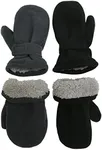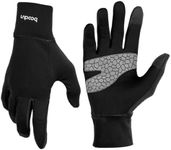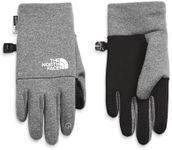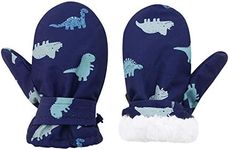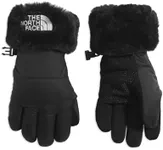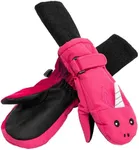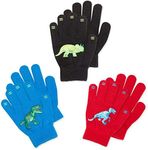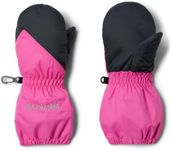Buying Guide for the Best Warmest Gloves For Kids
Choosing the warmest gloves for kids involves considering several key factors to ensure their hands stay warm, dry, and comfortable during cold weather. It's important to look at the material, insulation, waterproofing, fit, and additional features that can enhance the gloves' performance. Understanding these specifications will help you make an informed decision and select the best gloves for your child's needs.MaterialThe material of the gloves is crucial because it determines the durability, flexibility, and warmth. Common materials include synthetic fabrics like polyester and nylon, which are durable and water-resistant, and natural materials like wool, which is very warm but can be less durable. For the warmest gloves, look for materials that offer a good balance of warmth and durability. If your child will be playing in the snow, synthetic materials with waterproof coatings are ideal.
InsulationInsulation is what keeps the gloves warm by trapping heat. There are different types of insulation, such as down, synthetic fibers, and fleece. Down insulation is very warm and lightweight but can lose its insulating properties when wet. Synthetic insulation, like Thinsulate, is also warm and retains heat even when wet, making it a good choice for active kids. Fleece is soft and provides good warmth but is best used as a lining rather than the main insulation. Choose insulation based on the typical weather conditions your child will face.
WaterproofingWaterproofing is essential to keep your child's hands dry, especially if they will be playing in the snow or wet conditions. Waterproof gloves have a special membrane or coating that prevents water from getting in while allowing moisture from sweat to escape. Look for gloves labeled as waterproof or water-resistant. For very wet conditions, fully waterproof gloves are the best choice, while water-resistant gloves may suffice for less extreme conditions.
FitThe fit of the gloves is important for comfort and warmth. Gloves that are too tight can restrict circulation and make hands cold, while gloves that are too loose can let cold air in. Look for gloves that fit snugly but still allow for some movement. Many gloves come with adjustable straps or elastic cuffs to help achieve a better fit. Make sure to try the gloves on your child to ensure they can move their fingers comfortably.
Additional FeaturesAdditional features can enhance the functionality and convenience of the gloves. Features like reinforced palms and fingers can add durability, while touchscreen compatibility allows kids to use their devices without taking off their gloves. Some gloves also have built-in clips to keep them together when not in use, and others have reflective elements for better visibility in low light. Consider which features are most important based on your child's activities and preferences.
